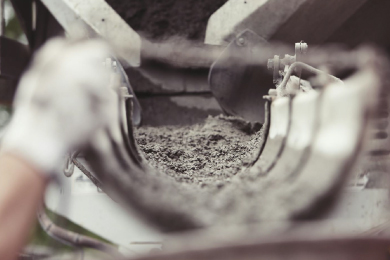Adequate ventilation can make the difference between a sick building and one that protects its inhabitants’ health and supports their productivity. (The opening of windows during the Covid pandemic taught us all a thing or two about this!)
But ventilation isn’t a silver bullet for all a building’s ills. In fact, when ventilation is combined inexpertly with heating and fresh air, it can result simultaneously in heat loss and greater heating loads, discomfort, dead spots where airborne pathogens can congregate, and unhealthy condensation and mould.
Balancing ventilation, heating , and airflow is a delicate exercise, yet in a recent survey conducted by industry group BPE Specialists, 84%of ventilation systems were found to have been commissioned incorrectly, throwing that balance way out of kilter.
This can result in the building’s heating and airflow fighting with each other, forcing up energy consumption and costs, and making for an uncomfortable living or working environment.
So how do you ensure your building isn’t misbehaving in this way?
Investigation and modelling come first
This can be a complex business, so it helps to take some of the factors out of the mix and boil it down to the desired outcome, which is, ultimately, a well-ventilated building for health and wellbeing that is also energy efficient.
To achieve this, at Green Building Design we go through a number of processes. We measure the airflow rates through all rooms and spaces, to take into account both the effect of installed ventilation and of air entering and leaving the building through external vents (the latter can cause pressurisation and depressurisation that makes the installed ventilation less efficient and leads to those dead spots, condensation, and mould).
At the same time, we also model the building’s thermal characteristics using advanced sensing equipment and software, to understand how heat behaves and travels in the building. This enables us to foresee how it may cause hotspots that then place an additional load on the ventilation system (or cause heat to be wasted by people opening windows), or cold spots that result in people turning the heating up.
We do all this investigation before we design, install or commission any part of the ventilation system, since it’s imperative that the challenges of balancing ventilation, airflow, and heating are measured and known before the design work starts.
Only this approach ensures that the ventilation design will perform optimally – which is just another way of saying that it won’t cause more problems for your building, your staff, and your bottom line than it solves.
A design that delivers
At the design stage, we work from the modelling to create a ventilation system with the all-important elements that enable it to work in harmony with the building’s heating, airflow, and external venting.
Energy efficiency is important here, so we further model how the combination of energy-efficient technologies like air handling units (AHUs) to limit the amount of cold or hot air coming in to the building, high specific fan power (SFP)-rated devices, and thermal wheel efficiencies - to recover energy from the extraction - will perform when all the necessary ducting and venting is in place.
We also focus closely on how we can incorporate maximum controllability, as one of the biggest causes of energy-inefficient ventilation is the inability to independently turn it on and off and regulate temperature and intensity across smaller different zones of the building.
Once the design is in place, the commissioning process begins – checking every single item works as it should, ensuring compliance, measuring the effect on the building, and adjusting where necessary.
Clearly, then, tailoring the ventilation to the building is about a lot more than simply installing kit “best efforts”-fashion, but it’s this tailoring process that ultimately ensures the ventilation is delivering what it’s capable of – cost-effective, healthy air movement for a healthy environment, not a bug-mill that’s also robbing you blind in energy costs in the background.
The human factor
All that said, we’d also be the first to admit that human behaviour plays a large part in how effectively and efficiently ventilation works, and so we make sure we advise on this – and the “lifestyle changes” it may necessitate – as well.
As just one example, we gave our own staff the option of starting work earlier in the day during the summer, as the ventilation and cooling required over the course of the day is much less if the greater part of the work takes place in the cooler early hours.
And for a recent client, we gave control of the fresh air over to each staff member, moving desks closer to openable windows and increasing the amount of fresh air the window can let in. This encouraged staff to open the windows much more, avoiding cooling most of the year, but without wasting energy, as sensors on the windows shut down the local AC units when the windows were opened.
In the winter, for the same client, we increased the output rates from the central AHU to provide much higher levels of fresh air, massively improving the employees’ wellbeing and their opinion of the environment.
In short, balancing ventilation is about what the building’s doing, what the other services in the building are doing, what the people in the building are doing, and possibly even what the weather outside is doing.
Contact us today, to find out how we can help you achieve optimum ventilation for your building.





.png)




